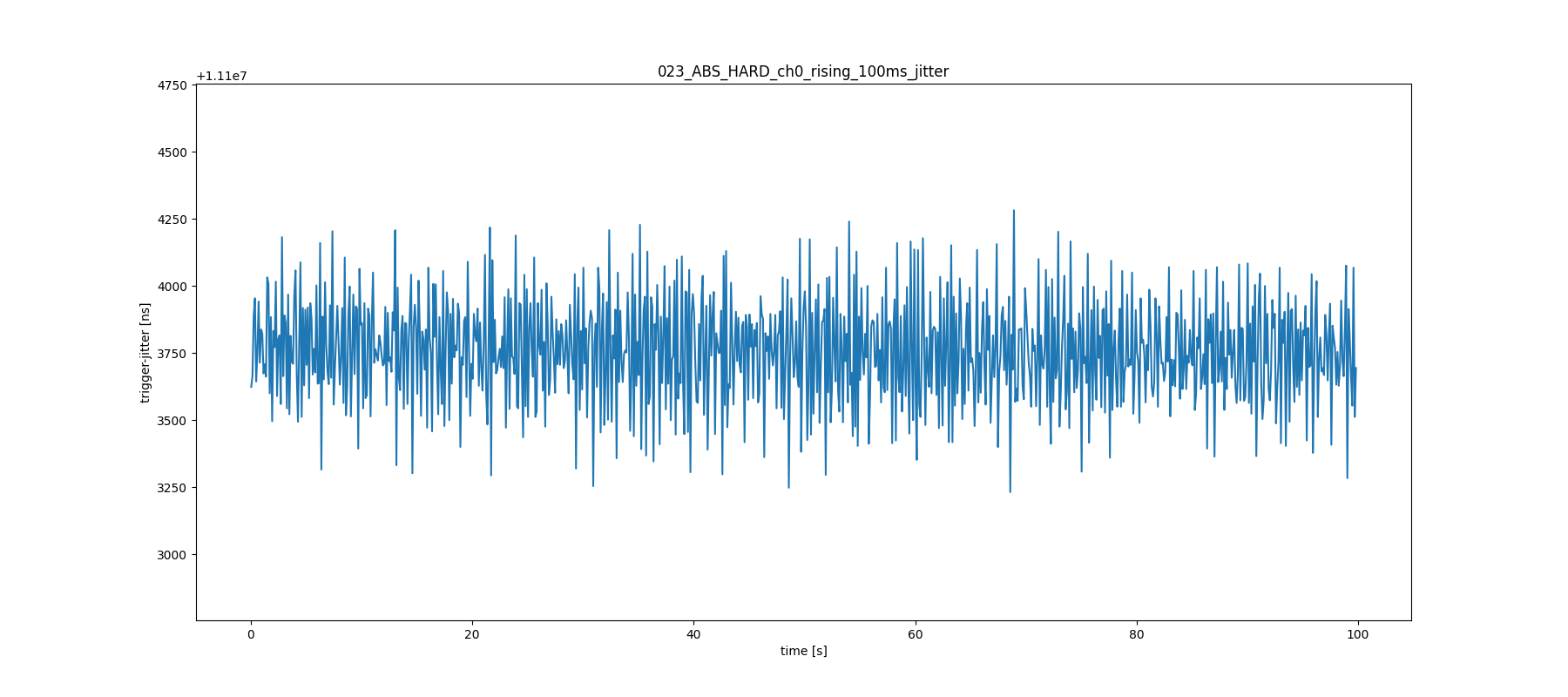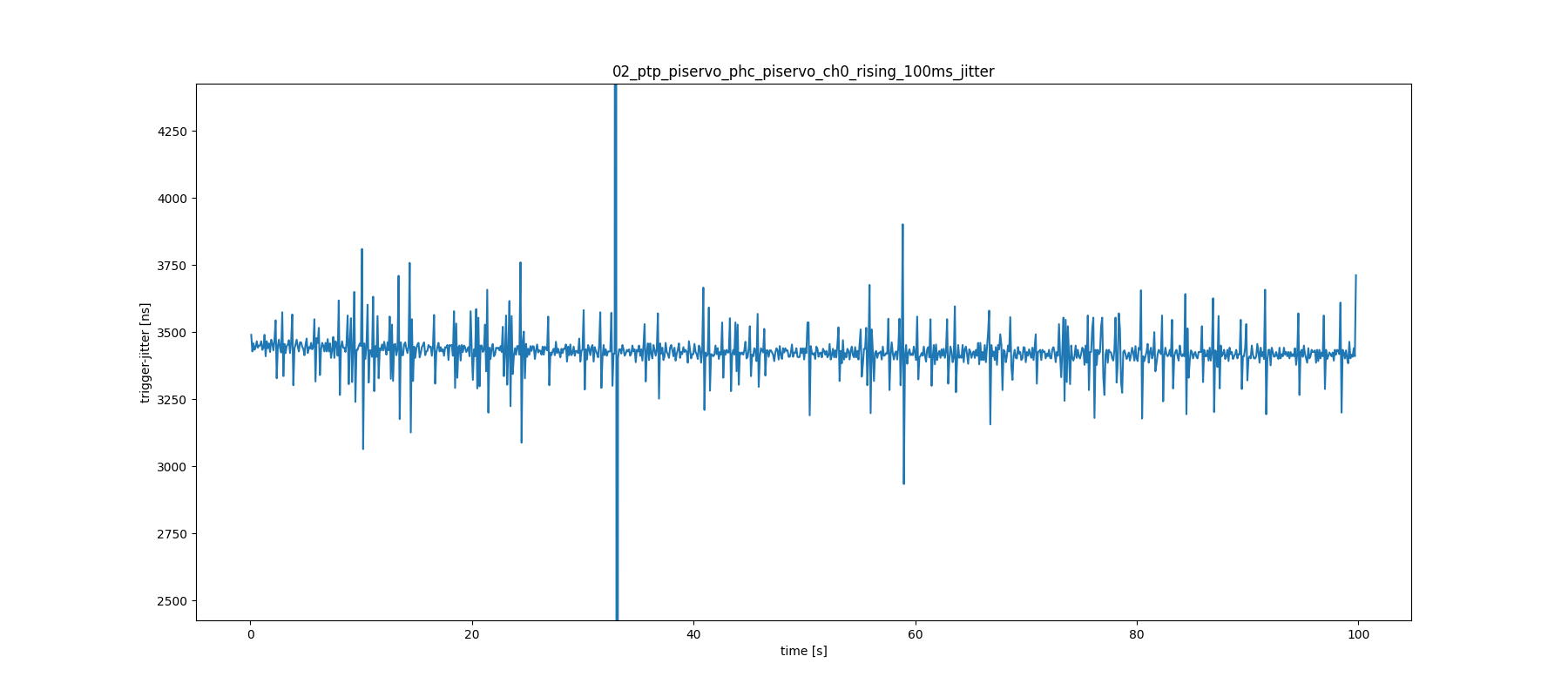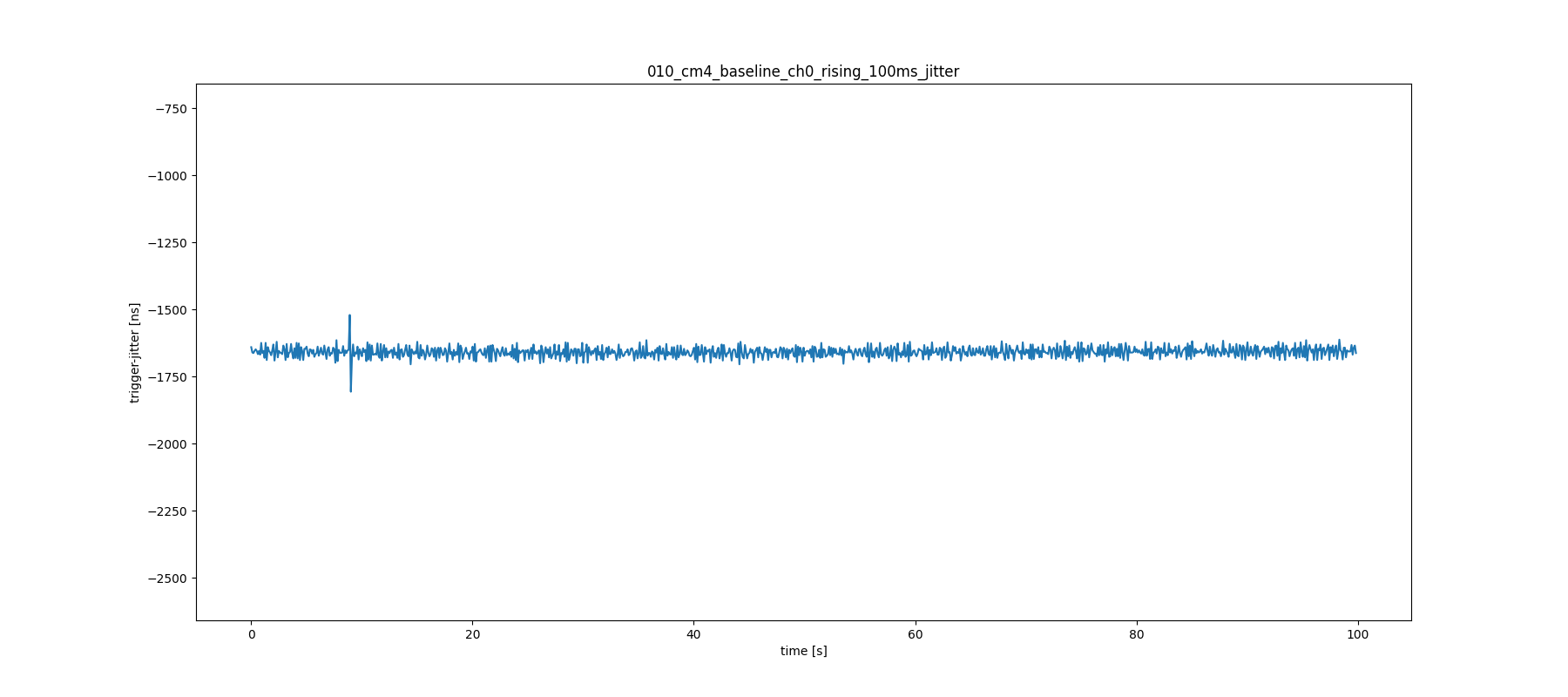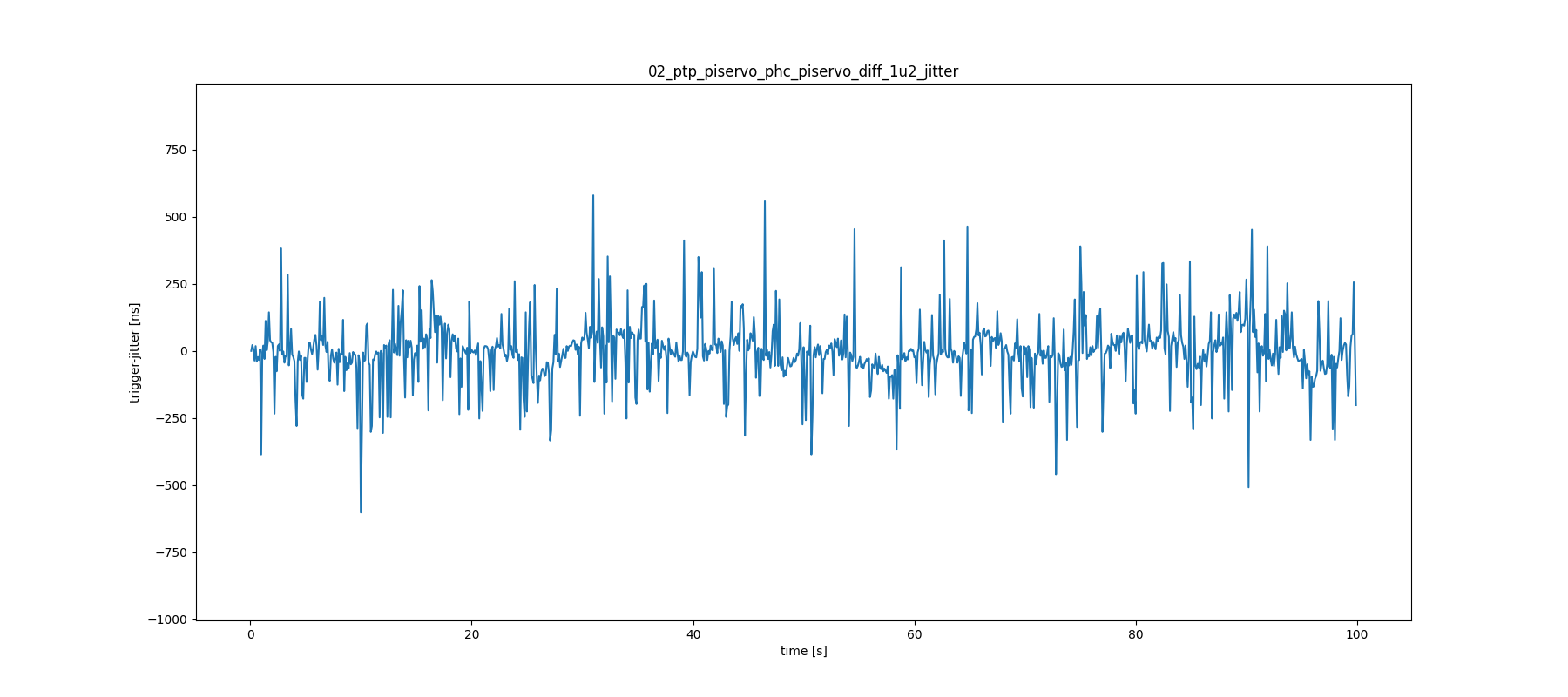Time-Sync - Analysis
Comparison between three embedded platforms and their performance. The BeagleBone Black is used in the current instance of the public testbed.
Setup
same cisco switch (Catalyst 2960-S)
same software configuration (where possible)
data recorded with a Logic Pro 16 @ 500 MHz
nodes & network are at rest (baseline)
GPIO - Jitter
How accurate is the 100 ms trigger on different platforms? Let’s visualize the jitter of one node.
In numbers:
simplified
Δ_q1 = 99%-Quantile - 1%-QuantileΔ_max = Max - Min
name |
Δ_q1 [ns] |
Δ_max [ns] |
|---|---|---|
BBB_023_ABS_HARD_ch0_rising_100ms |
874 |
1050 |
BBAI_02_ptp_piservo_[..]ing_100ms |
464 |
16552 |
010_cm4_baseline_ch0_rising_100ms |
78 |
286 |
BBone Black

BBone AI64

Raspberry Pi CM4

Some context and final words:
BBB takes ~ 300 ns to get kernel time. performance looks fine considering the age of the platform
BBAI takes ~ 40 ns to get kernel time. the random spikes are still unexplained. It could be caused by register-write-locks. The SOC has several coprocessors that share the same bus (linux shows 2ß rProc). Also the system is missing a RT-Kernel.
CM4 was overclocked to match BB-Ai, so it also takes ~ 40 ns to get kernel time. jitter looks best of these three systems
Sync Performance
In numbers:
Δ_q1 = 99%-Quantile - 1%-QuantileΔ_max = Max - Min
name |
Δ_q1 [ns] |
Δ_max [ns] |
|---|---|---|
BBAI_02_ptp_piservo_[..]_1u2 |
669 |
1182 |
RPI_005_norm_80_70_diff_1u2 |
336 |
378 |
BBone AI64

Raspberry Pi CM4

Deeper Dive
Raw data and Plots are at shepherd-planning